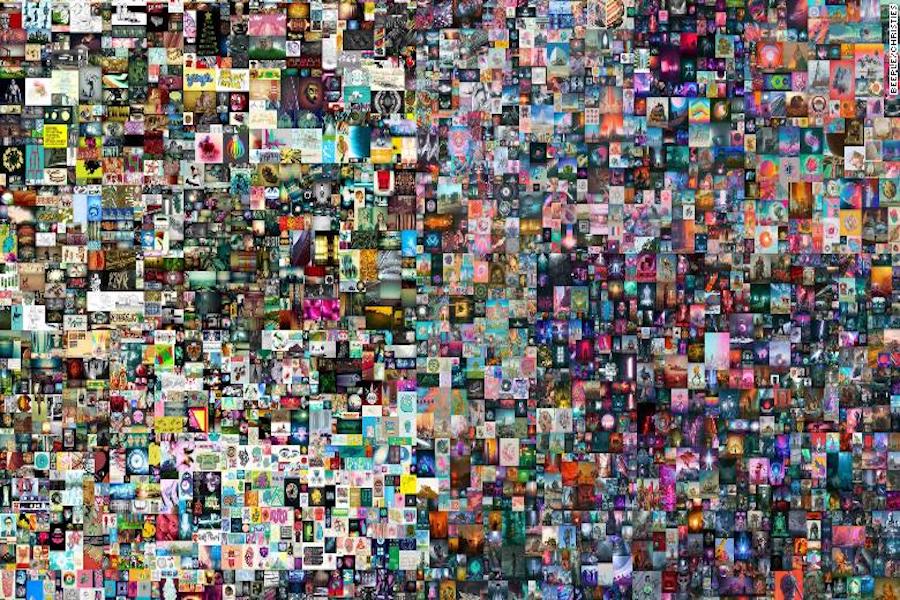NFTs, What are they?
April 23, 2021
With the rise of technology in our modern world, the limits on how far creative endeavors can go is endless. Shawn Mendes, Kanye West, Björk, Grimes, Aphex Twin, and Arca are taking advantage of this opportunity by using NFTs. Even the creator of the internet sensation ‘Nyan Cat’ sold his digital kitty as an NFT for $590,000, which puts how much opportunity the digital market has in perspective. The recent spike has not come without any uproar of course, but understanding the pros and cons of this digital market can be difficult if you don’t understand what an NFT means.
NFT stands for non-fungible token, meaning that the token is unique and can not be replaced for another copy. Digital art can be shared or copied around the world, but buying an NFT gives the customer proof of ownership for the item they’ve collected. The token sold is the rarity, not the art that is owned. Most NFTs are part of the Ethereum blockchain, Ethereum being a cryptocurrency (like bitcoin or dogecoin). NFTs also differ from other crypto currencies like bitcoin, because individuals can trade one bitcoin with another and own the same coin. NFTs have a unique record and hash code that can’t be copied or recreated, so selling one NFT for another will give the customer a completely different token. These tokens are essentially digital trading cards, but the cards are one of a kind and take place on the web. NFTs can be anything digital, ranging from music and Nyan Cat, but the main use has been around selling digital art.
“I just bought the NFT of the Nyan Cat GIF!” pic.twitter.com/d0SvHfg5Bj
— ink girl (@Ink_Girl_) April 12, 2021
Catie Berg (‘22) says, “The new market for digital capital is both really interesting and really concerning. On one hand, I think it’s cool how far people can go to be innovative but the inspiration for it does concern me. How easy and fast these people are earning money makes me wonder when it’ll end.”
The digital market may seem bland or too confusing, but the money that has been earned through NFTs is definitely notable. Customers are buying a 50 second video by Grimes for $390,000, and the digital artist Beeple sold an NFT for $69 million. Needless to say, the demand is definitely there and the supply continues to grow. NFTs do not limit to artwork, Twitter CEO Jack Dorsey sold his first tweet for $3 million. The tweet was first published on March 21, 2006 and said, “just setting up my twttr”. One individual even bought a virtual NFT cat for $172,000. The cat was bought through the game CryptoKitties, which allows users to buy and sell virtual kittens. The limits seem to be endless.
Dropping NFTs tomorrow at 2pm EST. enter the void pic.twitter.com/l9fNFUCheX
— ☾laire de ☾une (@Grimezsz) February 28, 2021
With this much potential, there does come a downside. Blockchain technology comes with enormous greenhouse emissions. In simpler terms, when an artist publishes a piece of art and clicks a button to “mint” it, they begin a process called mining, which uses huge loads of energy, computing strength and intricate coding puzzles. Ethereum uses a method called proof of work to create digital assets like NFTs. New York Times explains this by saying, “To successfully add an asset to the blockchain’s master ledger, miners must compete to solve a cryptographic puzzle, their computers rapidly generating numbers in a frenzied race of trial and error.” The creation of NFTs creates a damning environmental footprint of 200 kilograms of carbon, equal to driving 500 miles in an average American gasoline powered car. In order to produce electricity, natural resources are extracted and destroyed to supply this demand. For example, Joanie Lemercier released six CryptoArt works (a series around the platonic solids) and the release consumed 10 seconds more electricity than the entire studio over the past two years.
Kate Lambert (‘22) says, “I’m not exactly up to date with NFTs or what they even mean, I just know Grimes did one. Technology and all of this stuff seems so complicated and confusing, I can’t ever seem to keep up. The environmental problems from NFTs makes me worried, though.”
Rich people like owning limited things and the NFT makers see it as an opportunity to make money both disregarding the fact it destroys the enviroment cause of the servers required to keep it running having massive carbon emmission
— Blank (@Demirege2) April 12, 2021
The digital era we live in provides and hinders our possibilities as people. The damage Earth will see because of how in demand NFTs are currently poses a serious threat to reversing climate change. The profits that the artists will receive directly by selling their works poses new room for the market to sustain itself in innovative ways. As odd as it may be, digital ‘trading cards’ create room for millions to be made, the Earth to wither and questioning what art can expand to.

